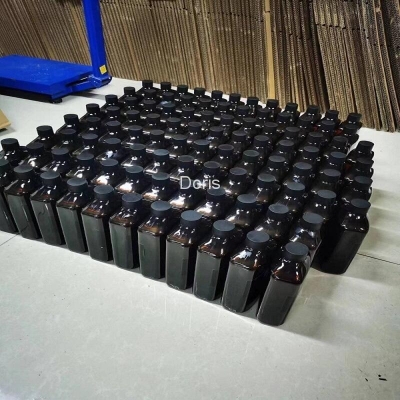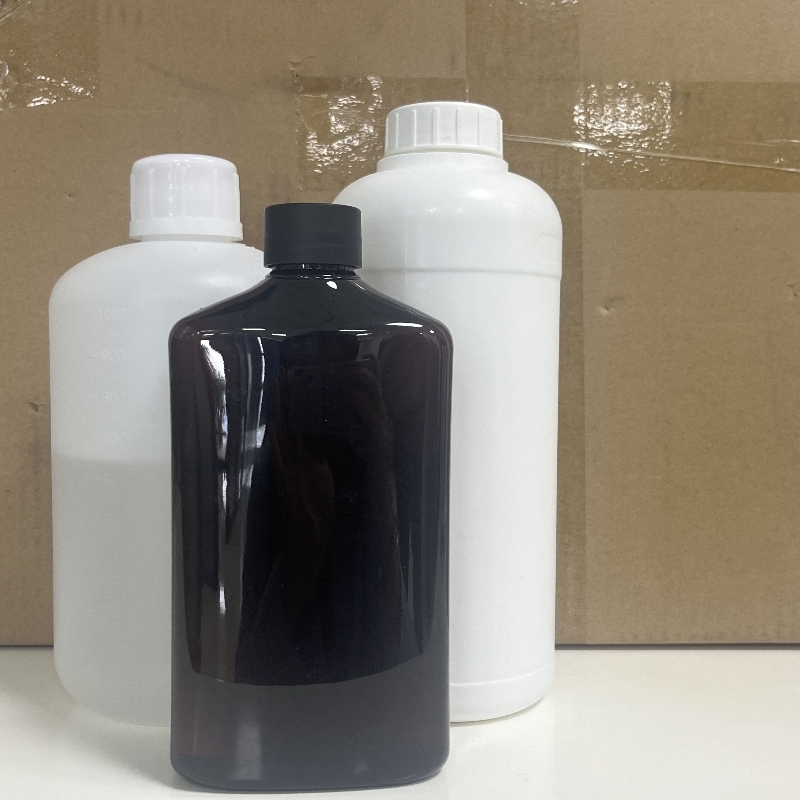-
Categories
-
Pharmaceutical Intermediates
-
Active Pharmaceutical Ingredients
-
Food Additives
- Industrial Coatings
- Agrochemicals
- Dyes and Pigments
- Surfactant
- Flavors and Fragrances
- Chemical Reagents
- Catalyst and Auxiliary
- Natural Products
- Inorganic Chemistry
-
Organic Chemistry
-
Biochemical Engineering
- Analytical Chemistry
- Cosmetic Ingredient
-
Pharmaceutical Intermediates
Promotion
ECHEMI Mall
Wholesale
Weekly Price
Exhibition
News
-
Trade Service
The latest issue of Drug Discovery Today published a paper on R&D efficiency of leading pharmaceutical companies — a 20-year analysis, which analyzed the R&D data of 14 global drug R&D leading companies and revealed some rules of drug R&D investment and output , Which is quite inspiring to the industry
.
This article reviews and analyzes the financial data of 14 major pharmaceutical companies from 1999 to 2018, 270 new molecular entities (NME) and more than 160,000 data; the analysis shows that in the past 20 years:
40% of New Molecular Entities (NME) are derived from patent research, 41% are derived from mergers and acquisitions, and 19% are derived from drug licensing: this shows the important role of external innovation in the pharmaceutical industry;
There is an approximately linear correlation between R&D investment and R&D output: the more a company invests in R&D, the higher the cumulative impact factor of its NME number and publications;
Pharmaceutical companies need an average of 16,315 R&D personnel to generate 25 NMEs; model analysis shows that for every additional 5 NME R&D output, an additional 3039 R&D personnel will be required, and the next 5 NMEs will require an additional 2,570 R&D personnel
.
The pharmaceutical sector is highly dependent on innovative growth
.
In the entire industry, the high expenditure and high risk of R&D requires effective use of R&D resources and the development of as many meaningful new molecular entities as possible to keep the company innovative and competitive
Generally, R&D efficiency is measured by dividing R&D input (cost or number of personnel) by R&D output (usually expressed as NME approval), or using the number of scientific publications and patent applications to measure R&D output
.
In recent decades, the challenges and complexity of pharmaceutical research and development have led to a decline in the efficiency of research and development in the pharmaceutical industry, which is called "Eroom's law"
.
In this context, we conducted a qualitative and quantitative comparative analysis of 14 major pharmaceutical companies to determine the success factors of R&D efficiency
Data Sources
Data Sources The data set includes the financial, drug output, and publication data of 20 major pharmaceutical companies (determined by the total sales of drugs in 2018) from 1999 to 2018 (Table 1)
.
Six companies including Johnson & Johnson, Bayer, Abbawi, Merck KgaA, Tewa and Ergen were excluded because of their different business models and uneven data sets
Table 1: Key R&D indicators of major pharmaceutical companies (1999-2018)
R&D expenses and new drug approval
R&D expenses and new drug approval From 1999 to 2018, the R&D investment of 14 major pharmaceutical companies increased steadily in absolute value, from US$49.
2 billion in 1999 to US$87.
1 billion in 2008
.
Expressed as a percentage of revenue (i.
The 14 leading pharmaceutical companies launched 270 (45%) of the 602 NMEs approved for the entire industry
.
In the past 20 years, for at least 4 years, a total of 7-9 of all 14 companies have been approved, which shows that the R&D output of some companies has been low
The most important sources of new chemical entities (NME) (Figure 1a) are patent research (40%), M&A activity (41%), and drug licensing (19%), which shows the importance of external innovation in the industry
.
Regarding the relative contributions of the three innovative sources, the data of the four companies show different R&D models (Figure 1b): Pfizer and Roche have 73% and 86% of NMEs from acquisitions or licenses, respectively; while Bristol-Myers Squibb and Novartis Part of the NME (71% and 65% respectively) is independent research and development
Figure 1: Sources of New Molecular Entities (NMEs) of major pharmaceutical companies during the reporting period
From 1999 to 2018: (a) 14 major companies; (b) individual companies
.
Scientific publications
Scientific publications From 1999 to 2018, 14 leading pharmaceutical companies published a total of 167,138 scientific papers
.
In terms of quantity, Pfizer, GlaxoSmithKline and Merck & Co.
Sorted by average impact factor, the three leading companies are Genentech (7.
47), Gilead (7.
06) and Amgen (6.
19)
.
The three companies with the highest cumulative impact factor (ie, the product of the average impact factor multiplied by the number of publications) are GlaxoSmithKline (104047), Pfizer (101825) and Roche (95603) (Table 2)
NME approval and scientific publication efficiency
NME approval and scientific publication efficiency We found an almost linear relationship between R&D expenditure and output parameters
.
In the past 20 years, the more money a company has invested in research and development, the higher its output (expressed as an approved NME or cumulative impact factor)
.
Pfizer, Merck & Co.
, Novartis, GlaxoSmithKline (GSK) and Gilead Sciences outperform their peers in terms of NME output, indicating that their R&D resources are effective Use
.
Companies above the trend line in Figure 2 seem to have performed better than companies below the trend line over the past 20 years
.
Most of the NMEs of Novartis and GlaxoSmithKline come from patent projects, further consolidating their image as R&D engines, while Pfizer, Merck and Gilead seem to have effectively used their intensive M&A and licensing activities
.
Figure 2: R&D efficiency regression evaluated based on (a) the number of NMEs and (b) cumulative influencing factors
R&D scale and efficiency
R&D scale and efficiency The number of R&D personnel usually has the greatest impact on R&D costs.
We analyzed the correlation between the number of approved NMEs and the average number of employees (Figure 3), and found that pharmaceutical companies need 16,315 R&D personnel on average to generate 25 NMEs; model analysis shows that every increase Five NME R&D outputs will require an additional 3039 R&D personnel, and the next five NMEs will require an additional 2,570 R&D personnel
.
This shows that there is indeed an economic R&D scale: pharmaceutical companies can benefit from large R&D institutions
.
Pfizer, Merck, Novartis, GSK, and Gilead Sciences seem to be using R&D scale more effectively than their peers
.
Possible reasons for the improvement of R&D efficiency are: lower capital costs, greater investment portfolio diversity, better use of R&D technologies, tacit knowledge aggregation, learning from past successes, greater data ownership, and better access to real data and so on
.
Figure 3: R&D economies of scale for major pharmaceutical companies (a) Linear model and (b) Non-linear model (AuQ: These two parts need to be labeled
.
)
Conclusion and Outlook
Conclusion and Outlook The analysis results show that in the past 20 years, the R&D efficiency of the 14 leading pharmaceutical companies evaluated seems to have declined; but the new chemical entities launched by these 14 pharmaceutical companies still account for half of the market, showing the past of these companies.
Dominance in the industry for 20 years
.
And a large part of their NME is obtained through mergers and acquisitions and licenses, which shows that large pharmaceutical companies are increasingly dependent on external innovation
.
Our analysis reveals that the higher the R&D investment, the higher the R&D output; a company with more than 14,000 R&D employees can produce a higher R&D output than the linear function predicts
.
Our analysis of the R&D efficiency of leading pharmaceutical companies over the past 20 years shows that there is a "scale effect" in pharmaceutical R&D: large R&D institutions benefit from their scale and increase output, and are often more efficient and competitive than small companies
.
Finally, top companies have the ability to use large-scale mergers and acquisitions or long-term funds to become a large and efficient R&D institution
.
And the first San tier of small companies often limited in scale and R & D budgets, the need to maintain competitiveness strategy
.
Medium-sized pharmaceutical companies have the opportunity to capitalize on scale and compete with the largest companies in the industry.
They have the agility and flexibility to quickly adapt to market trends, allowing them to fully benefit from R&D opportunities
.
They can also avoid the high strategic risks brought about by mergers and acquisitions, and some leading pharmaceutical companies must bear these risks in order to remain competitive
.







